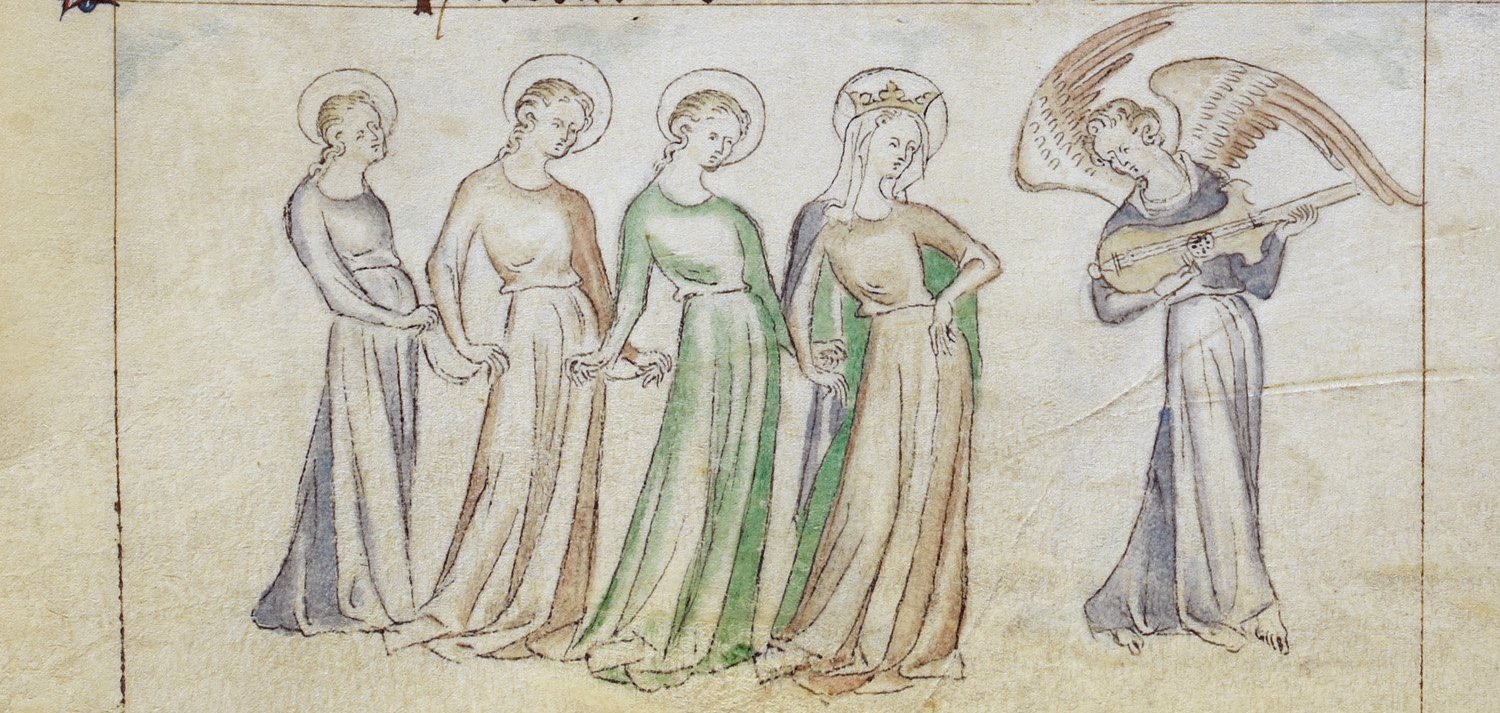 In the medieval and renaissance periods there were plentiful images of musical instruments and singers in manuscripts, paintings and sculpture, and many manuscripts of music notation survive from those eras. There are rare instances which bring these two elements together: an artist’s image of singers and musicians in which an actual piece of music is shown, readable and performable by the viewer.
In the medieval and renaissance periods there were plentiful images of musical instruments and singers in manuscripts, paintings and sculpture, and many manuscripts of music notation survive from those eras. There are rare instances which bring these two elements together: an artist’s image of singers and musicians in which an actual piece of music is shown, readable and performable by the viewer.
That is the subject of this article, sifting out the faux music from the real, addressing questions of message, symbolism and meaning, asking why artists chose to include performable music, and how this painted sound adds to the communication of the artist and the significance of the art.
This article ranges from face-pulling singing monks to Marian antiphons, from a lute-playing Mary Magdalene to a unique survival of Gloria notation, from Jheronimus Bosch’s egg to lustful monks, with paintings, soundfiles and video examples of music notation in art. It can be read stand-alone, or as a precursor to three essays about music in the art of Jheronimus Bosch, the first of which focusses on the alleged ‘butt music’ in Bosch’s painting of 1495–1505, The Garden of Earthly Delights, available to read here.

